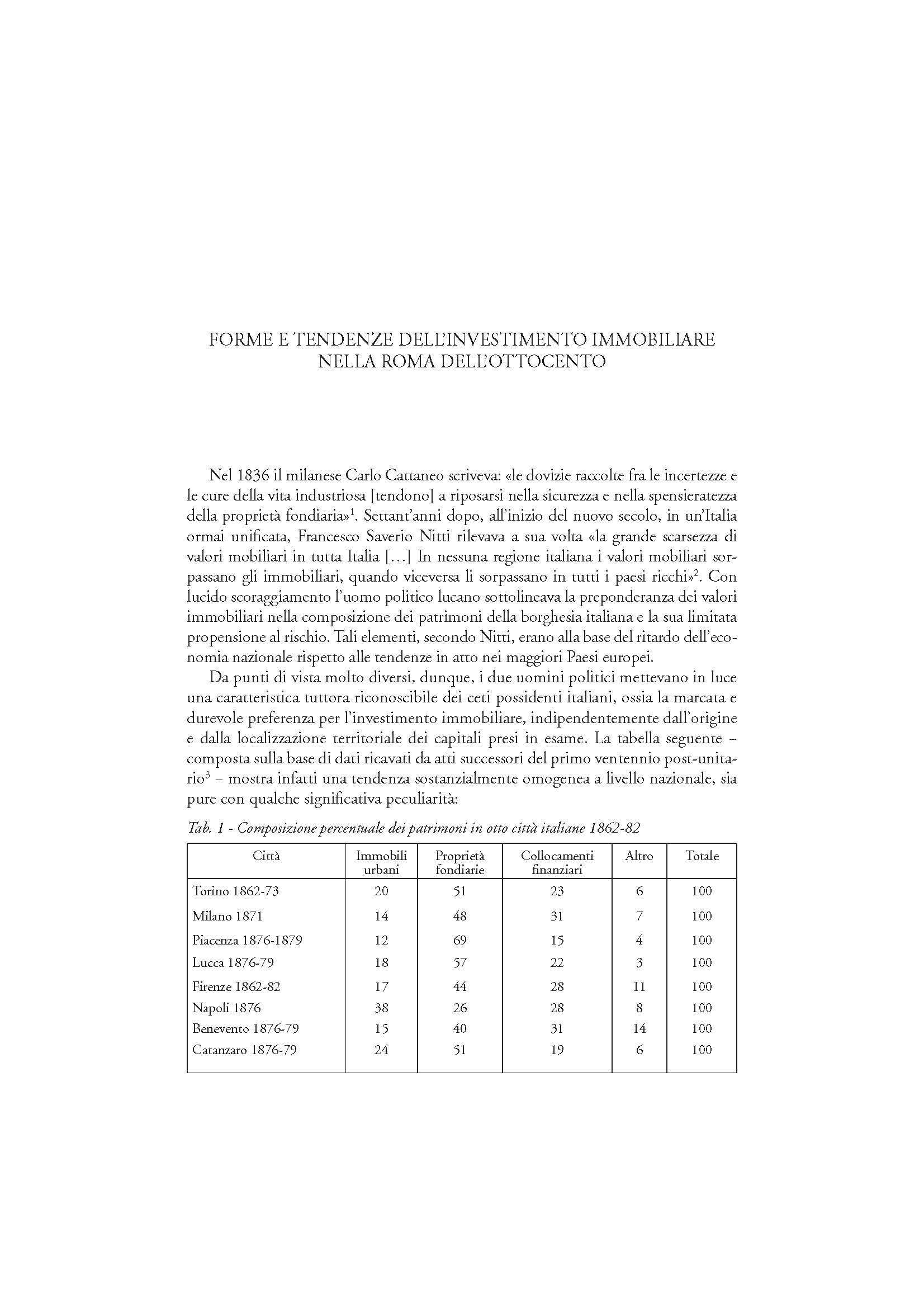Forme e tendenze dell’investimento immobiliare nella Roma dell’Ottocento
6,00 €
The essay analyses the nature of real estate investments in papal Rome and points out the tight interconnection between economical and non-economical factors.It examines the effects of the demographic trends on the population’s distribution and density in the different districts of the city; it summarizes the principal public interventions on rental regulations; it takes note of the consequences of the most signifi cant political-institutional events; profi ts and real estate investment risks are compared to alternative uses of capital. The essay also presents some examples of investments in constructions based on a demand for lodgings tightly linked to the social transformations of the urban classes as well as to the presence of numerous foreign colonies.What emerges is the picture of a complex market, one that escapes the usual law of supply and demand, and is strongly conditioned by fi nancial considerations, juridical-institutional dispositions and by crucial symbolic values.
The essay analyses the nature of real estate investments in papal Rome and points out the tight interconnection between economical and non-economical factors.It examines the effects of the demographic trends on the population’s distribution and density in the different districts of the city; it summarizes the principal public interventions on rental regulations; it takes note of the consequences of the most signifi cant political-institutional events; profi ts and real estate investment risks are compared to alternative uses of capital. The essay also presents some examples of investments in constructions based on a demand for lodgings tightly linked to the social transformations of the urban classes as well as to the presence of numerous foreign colonies.What emerges is the picture of a complex market, one that escapes the usual law of supply and demand, and is strongly conditioned by fi nancial considerations, juridical-institutional dispositions and by crucial symbolic values.

